Projects
Our research team is engaged in a variety of projects, both at national and international level, exploring the frontiers of terrestrial and marine bioacoustics. These exciting initiatives aim to extend our understanding of sound ecosystems, whether across vast expanses of land or deep beneath the sea.
By joining forces on an international scale, we are positioning ourselves to make significant advances in the field of bioacoustics, helping to preserve biodiversity and understand the complex interactions within our auditory ecosystems.
🟢 Terrestrial projects 🔵 Aquatic projects
ORCALAB - Biosonar cognition and communication

This project started in 2014 with the courtesy of ORCALAB Hanson Island,
aiming to study at large scale the voices of BC Orcas
Over more than 50 km2 acoustic observatory. We get inside their
biosonar details in order to study the Orca perception and to better prevent the masking effect by the intensification of the marine trafic.
PI Paul Spong, coPI H. Glotin
SEAsteMAR (former GIAS)

Mediterranean sonobuoys and oceanography meet to increase the navigation
security in the cross-border area between France and Italy by using AI
for sea forecast, by detection, and monitoring in real time the
cetacean, developing specific IoT Sonobuoys
LIS CIMA MIO ARPAL (Pi), CoPI Molcard & Glotin
ADSIL - Advanced AI for Subsea bioacoustics

The chair for its research component focuses on 3 related tasks: T1: propagation and learning / acceleration of physical model by DNN; T2 Classification and joint localization by fusion of heterogeneous features; T3 optimization of distributed efforts on an acoustic drone fleet.
ANR Chaire natioale AI 2020-2025, Pi Glotin, CoPi Paiement, Paris
ADAPREDAT "SYMPHONY of the Old World"

Analyse of inter-species interactions in the arctic foraging areas of marine superpredators (orcas, roquals, cachalots, humpback whales) with detection, classification, and algorithmic hardware and softwares that we develop since 2021.
LIS IM2NP MIO, PI Glotin
TERRA FORMA

In-situ observation platform based on smart sensors to monitor soil capita, water ressource, chemical pressure, biodiversity and landscape integrity using multimodal AI.
LIS IM2NP LEFE OSUG/CNRS, laboratoire Géosciences Rennes and 70
partners, CoPI Gies, Glotin
Cachalots voices

Without any perturbation, by our advanced acoustic antennas,
we aim to investigate the secrets of Cachalot socialization, communications and foraging in the deep.
Since 10 years in Med Sea, and Mauritius (Indian Ocean) we get more and more cues on a possible language.
Longitude181, LIS, coPI Sarano & Glotin
CARI'MAM 2

part.1 2017-2021, part.2 2022-2025
Following CARI’MAM project that federated 12 nations of the caribean sea, CIAN keep on monitoring marine mammals diversity to enhance this preservation network with locals partners.
LIS CAR-SPAW OFB & 12 nations in Caribean, PI Glotin (part2).
PSIBIOM

Hardware and AI model development to implement a numeric plateform of integrated services for biodiversity monitoring, using modelisation and connected tools.
LIS TerrOïko SiConsult IRIT LEFE, PI Roincé, CoPI Glotin
EUROPAM : European Passive Acoustic Monitoring

Transnational European acoustic monitoring of marine biophony and anthropophony, novel network, devices and AI algorithms.
LIS IMAR Akvaplan-niva, Univ. Pavia, Nat. Park Port-Cros, PI Glotin, Camus, Fossati
SYLVANIA

ANR 2022-2026
Sylvania creates synergy between distant disciplines. It contributes in a FAIR policy and still with a strategy of valorisation when relevant, to observe and preserve the biodiversity thanks to a new generation of acoustic sensors and novel algorithms for advanced observation and model useful to the ecological transition. It provides tools and data to regulate policies for environmental sustainability.
LIS IM2NP LEHNA MFFP, CoPI Glotin, Gies
QBAM, Quebec Biodiversity Acoustic Monitoring

Quebec biodiversity monitoring by passive acoustic across wide latitudes. Acoustic survey of birds, bats, insects all around Quebec
MFFP, LI, Pi Simard, CoPI Glotin
ULPCOCHLEA - Bio-inspired acoustic sensors

The ULP COCHLEA project will, by mimicry, design bio-inspired acoustic sensors more intelligent, smaller, cheaper and passive for in situ monitoring and analysis over long periods of time of the marine environment and associated maritime activities, in particular in the Mediterranean Sea. The project will enable the development of cognitive and predictive models to understand underwater life at longer spatial and temporal scales.
LIS CRIStAL INPS IEMN, coPI Glotin, Paris
TABMON - Transnational bird Biodiversity Monitoring
🟢 EUROPEAN BIODIVERSA 2024-2027
TABMON applies autonomous acoustic sensing to transnational biodiversity monitoring across a large latitudinal range in Europe. Better integrating essential biodiversity variables (EBVs) into biodiversity policy and management requires operational workflows for integrating heterogeneous data into harmonised EBV data products. Scaling this up to inform at a transnational level by harmonizing data collection, analysis, integration with existing data types and integration of information into EBVs will improve operational monitoring for the Bird and Habitat Biodiversity Strategy.
This will provide the basis into FAIR and SMART indicators at the EU level. In summary, TABMON will provide an end-to-end demonstration of acoustic observation collection, analysis, and integration, building upon transdisciplinary and transnational academic excellence and stakeholder expertise in critical areas
LIS, UvA, IBED, TCE, CTFC, CBS, TiU, NINA, Pi Uva, coPI Marxer & Glotin
IRP - Detection & AI for Biosonar in the Southern Cone

Small odontocetes, such as small dolphins or porpoises, are discreet species, very often threatened and sensitive to human occupation. Passive acoustics is a good way to monitor these populations, but this monitoring comes up against various technical and theoretical problems. The acoustic productions of some of these species are high-frequency, narrow-bandwidth clicks (NBHF), which need to be recorded at very high sampling rates, by dedicated devices. Theoretical and computer tools are lacking to discriminate between species that sometimes coexist in the same area and whose behavior and spatial occupation are not well known.
We record the acoustic productions of dolphins and coastal porpoises present on the Argentine coast, in the province of Buenos Aires and in other important zones of the American south cone, such as Patagonia (Chilean and Argentine) and the Chilean coast. We develop mathematical models for describing these signals and then, thanks to these models, we will refine their detection and classification, using tools related to artificial intelligence (convolutional neural network for example). The classification of clicks according to species would allow longer-term monitoring through dedicated detectors of the sound productions of these species whose conservation status needs to be clarified.
LIS, IIMyC, UACh, Chili & Argentina, coPI Glotin, Malige

